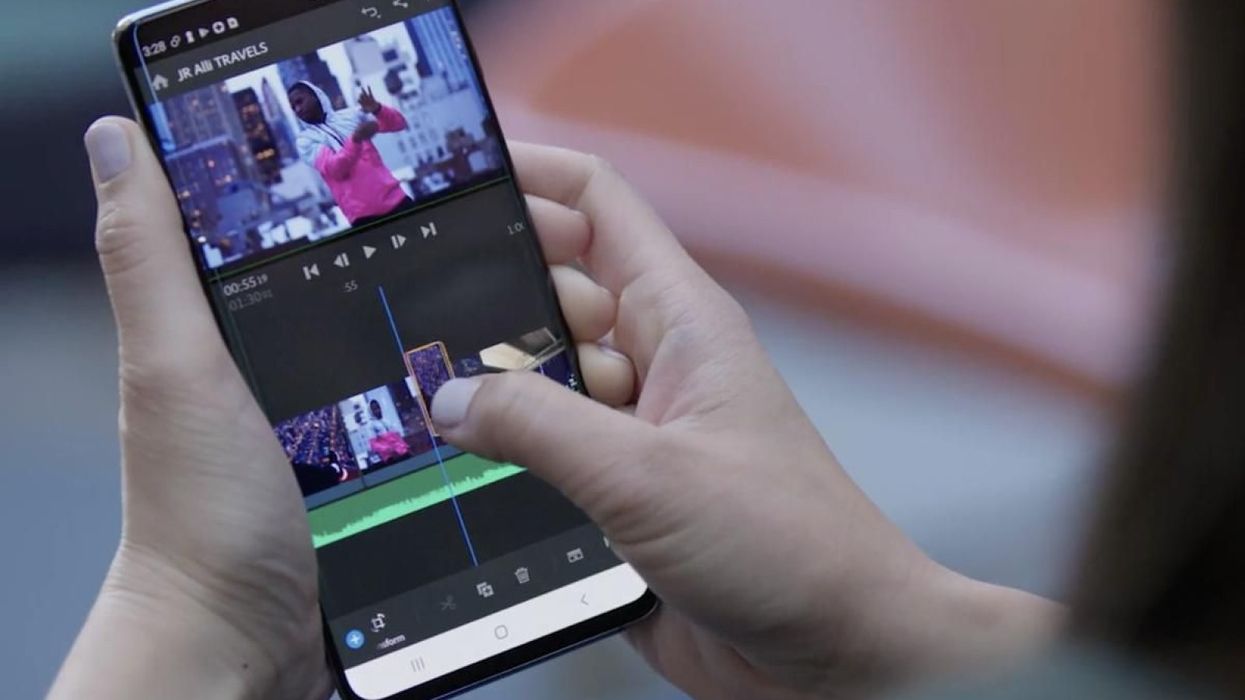Adobe Rush Is Now (Mostly) Available on Android
Now Android users can (for the most part) edit video on their smartphones, too, with Adobe Rush.

First, let's clear up the point of Adobe Rush. It's not a full-featured editing software. Honestly, coming from something like Final Cut Pro or Adobe Premiere Pro would probably be a detriment to workflow because it's quite limiting in features that are standard in the aforementioned programs. But, if you're using mobile devices for content production and editing and delivery and you're not editing the next Ben-Hur, then Rush makes sense (especially because it's free). I've used it between my iPhone X and my MacBook Pro, and for basic stuff, like jump cuts and simple titling and quick, 10 to 20-minute delivery, it works fine.
I think the key is to not treat a Rush project with too much care.
If you embrace the "rush"ness of Adobe Rush, then the software starts to make a lot more sense.
It's about time, though, that it came out for Android. Except...it only kind of came out for Android.
Adobe released Rush for only a small handful of Android devices: Samsung Galaxy S10/S10e/S10+, S9/S9+, Samsung Galaxy Note 8/9, the Google Pixel 3/3XL, 2/2XL, and the OnePlus 6T.
There's a good reason. I promise.
To understand why we have to look at Apple and the iPhone first. Apple makes only a handful of different phones and every single one of them runs the exact same OS. This makes the development of mobile applications quite simple and quite easy to distribute.
Unlike Apple, Android is open source, which means that it's available to any manufacturer that wants to license it for its hardware (this is an oversimplification of how Android finds itself onto various different pieces of hardware, but for lack of a better description, it makes sense). As a result, it's really difficult to work out the proprietary developmental hoops that a developer has to jump through to get an app onto a device because it can vary widely from manufacturer to manufacturer. Sometimes even from device to device.
However, Android devices can be a lot more powerful than Apple devices.
If you've had an Apple computer in the past few years, then you've also had conversations with members of the PC master-race about how they can build Windows-based computers with twice the power for half the cost...
Cool...
The same can be said, in many cases, for Android phones. Android beats out Apple in a number of different categories and, in some cases, that is the hardware. With better performance from RAM, processing power, and battery life, It makes more sense to shoot, edit, and deliver content from some Android devices over Apple devices. But not many.
Adobe seems to be strategic about this release.
It looks to me like Adobe saw the most popular Android devices with content creators and rolled it out for that audience. Rather than spend eons making sure that every single Android device was compatible with its app, Adobe looked at what audience would most likely download the app, and catered specifically to them.
In a way, Adobe is running an experiment.
I'm willing to wager my iPhone X that if this goes well among the exclusive group of Rush-approved phones, then Adobe will run an update making it compatible with a plethora of Android devices.
If you've got an Android, you can download Adobe Rush for free on Google Play now.
Phones and content creation is a hot button issue, so let us know what you think. Is Android better than Apple (I feel a fight brewing in the comments already)? Are phones the future of content creation? Let us know!
Source: ProVideo Coalition














